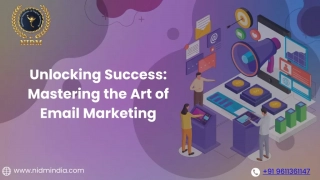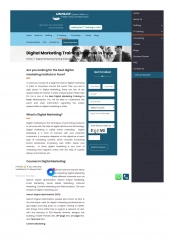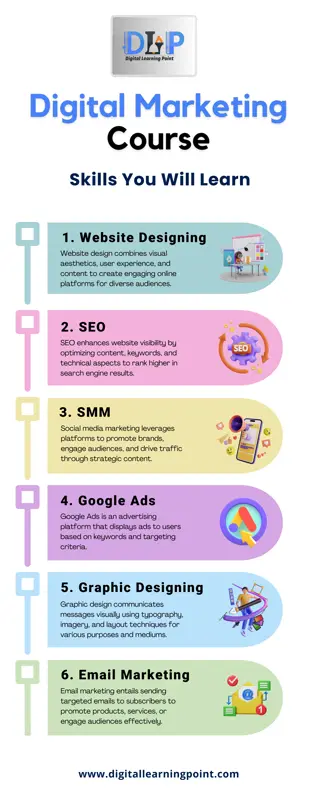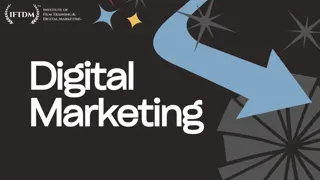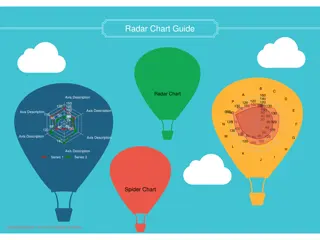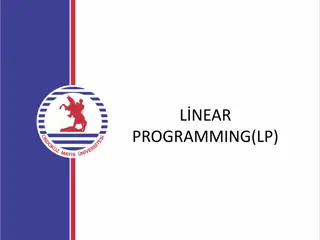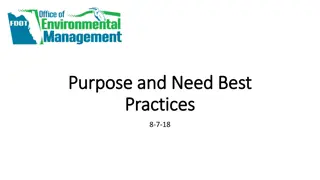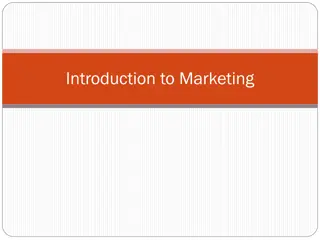Effective Marketing Research: Problem Definition, Decision Alternatives, and Research Objectives
Learn how marketing managers define problems, identify decision alternatives, and set research objectives for effective marketing research. Explore various research approaches, instruments, sampling plans, and contact methods to gather the needed information efficiently.
- marketing research
- problem definition
- decision alternatives
- research objectives
- research plan
- data resources
- research approaches
- research instruments
- sampling plan
- contact methods
Download Presentation

Please find below an Image/Link to download the presentation.
The content on the website is provided AS IS for your information and personal use only. It may not be sold, licensed, or shared on other websites without obtaining consent from the author. Download presentation by click this link. If you encounter any issues during the download, it is possible that the publisher has removed the file from their server.
E N D
Presentation Transcript
1) Define the Problem, the Decision Alternatives, and the Research Objectives Marketing managers must not define the problem too broadly or too narrowly for the marketing researcher. Specify decision alternatives State research objectives
2) Develop the Research Plan Develop the most efficient plan for gathering the needed information and what that will cost. To design a research plan, companies have to make decisions about: A) The data resources B) The research approaches C) The research instrument D) The sampling plan E) The contact method
A) The data resources Secondary data- Are data that were collected for another reason and already exist somewhere. Primary data- Are data freshly gathered for a specific purpose or for a specific research project. Researchers begin their investigation by examining low-cost and readily available secondary data to try to solve the problem without needing to collect costly primary data.
B) The Research Approaches Marketers collect primary data in five main ways: 1) Observational Research- Researchers can gather fresh data by observing the relevant actors and settings discreetly as they shop or consume products. Ethnographic research is a type of observational research method that uses concepts from anthropology and other social sciences to provide a cultural understanding of how people live and work. It involves sending trained observers to watch and interact with consumers in their natural environment to try to uncover hidden wants and needs that may not surface in any other form of research.
B) The Research Approaches 2) Focus Group Research- A focus group is a gathering of 6 to 10 people careful selected by researchers based on certain demographic, psychographic, or other considerations, and brought together to discuss various topics of interest. A paid moderator tries to discover consumers real motivations and why they say and do certain things.
B) The Research Approaches 3) Survey Research-Companies use surveys to evaluate people s knowledge, beliefs, preferences, and satisfaction and to measure these magnitudes in the general population. Companies should keep their surveys short and simple and should only send surveys no more than once a month.
B) The Research Approaches 4) Behavioral Research- Customers leave clues about their purchasing behavior in store scanning data, catalog purchases, and customer databases. Marketers can learn a lot by analyzing these data. 5) Experimental Research- Are designed to capture cause-and-effect relationships by eliminating competing explanations of the observed findings. The most valid research method.
C) The Research Instruments Questionnaires-Consists of a set of questions presented to respondents. Most flexible and most common type of research instrument. Researchers need to carefully develop, test, and debug questionnaires before administrating them to a large number of respondents.
C) The Research Instruments Types of Questionnaires: Closed-ended questions-This type of questionnaire specifies all the possible answers and provides answers that are easier to interpret and organize. Examples: Multiple Choice, Likert scale, and Importance scale. Open-ended questions- This type of questionnaire allows respondents to answer in their own words and may reveal more on how people think. Example: Completely unstructured, and Sentence completion.
C) The Research Instruments Qualitative Measures- Are unstructured measurement approaches that permit a range of possible responses. Examples: Word association-Ask subjects what words come to mind when they hear the brand s name. Brand personification- Ask subjects what kind of person they think of when the brand is mentioned. The brand personality delivers a picture of the more human qualities of the brand.
D) The Sampling Plan Designing a sample plan calls for three decisions: Sampling unit: Who should we survey? 2. Sample size: How many people should we survey? 3. Sampling procedure: How should we choose the respondents? 1.
E) Contact Method Mail Questionnaires-Used for people who do not give personal interviews or whose responses might be biased or distorted by the interviewers. Response rate low Telephone Interviewing- Good way to gather information quickly. Interviewer can clarify any unclear questions Interviews should be brief and not too personal.
E) Contact Method Personal Interviewing- Interviewer can ask more questions and record additional observations about the respondents, such as dress and body language. Arranged interview and Intercept interview Online contacts Advantages: Inexpensive Fast People tend to be honest and thoughtful online Versatile
E) Contact Method Disadvantages: Samples can be small and skewed Online panels and communities can suffer from excessive turnover Online market research can suffer from technological problems and inconsistencies.
3) Collecting Information The data collection step is the most expensive and the most prone to error. Problems with collecting surveys: Respondents will be away from home and must be contacted again Respondents may refuse to cooperate Respondents will give biased or dishonest answers Some interviewers will be biased or dishonest.
4) Analyze the Information 5) Present the Findings 4) Analyze the Information Analyze the results of the findings by tabulating the data and developing summary measures. 5) Present the Findings Researchers must present findings relevant to the major marketing decisions facing management. Researchers are being asked to play a larger role in translating data and information into insights and recommendations.
6) Make the Decision Managers must weigh the evidence from the research findings. If their confidence in the findings is low, they may decide to not adopt the recommendations of the study. If their confidence in the finding is high, they may decide to adopt the recommendation of the study Manager may also ask for more research to be done on the subject.
References Kotler, Philip and Kevin Lane Keller . Marketing Management. Pearson Education Limited, 2012.












